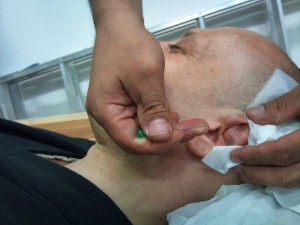Otoplasty is a surgery that is performed to correct prominent ears or to reconstruct missing parts of the ear. Ear reconstruction is necessary due to either congenital defects or because of trauma and injury to the ear. The procedure is also known as pinnaplasty when it is used to correct prominent ears.
Why Do People Opt For Otoplasty?
Otoplasty is relatively risk free and provides great satisfaction to children and adults who have been the victim of stares, teasing or bullying due to their misshapen ears. The procedure also gives cosmetic satisfaction as it restores the facial balance.

The Need for Ear Otoplasty – The Indications
Otoplasty surgery or pinnaplasty can be used to correct a number of ear defects. These include:
- Cagot Ear – It is a congenital defect and denotes lack of earlobes.
- Darwinian Ear – This is caused because the rim cartilage is flat.
- Cauliflower Ear – Repeated trauma and injury can damage tissues and cause cauliflower ears
- Cat’s Ears – These refer to extremely prominent ears
- Microtia – A congenital problem marked by the severe underdevelopment or absence of the external ear
- Cleft Earlobe – This leaves the patient with a notch on the fleshy portion of the earlobe causing cosmetic distress
- Stahl’s Ear – The upper part of the ear has an extremely pointed appearance
- Scroll Ear – The outer edge of the ear curls inwards or outwards.
A Quick Look at the Ear Otoplasty Procedure
Otoplasty can be both surgical as well as non-surgical.
Surgical Otoplasty
Surgical otoplasty is normally done under local anesthesia for adults and general anesthesia for children. There are several techniques used by surgeons to correct ear deformities or damage during surgical otoplasty. In general terms, the procedure involves making an incision behind the ears.
The site of the incision ensures that any scars are hidden in the natural folds of the skin in the area. Once the incision is made, the ear cartilage is either trimmed or reshaped and held in place with permanent sutures. In more complicated cases, reconstruction may be involved. The surgeon may remove cartilage from other parts of your body in order to reconstruct the ear.
The surgery normally takes around one to two hours. It is sometimes done in the outpatient department. If the surgery is being conducted on a young child, an overnight stay at the hospital is often recommended.
Non Surgical Otoplasty
Non surgical otoplasty can be successfully used to correct ear defects of new born children. The procedure is used for babies born with cauliflower ears or pointed and protuberant ears. In the early stages of infancy, the outer ear will be extremely malleable.
Traditionally, such deformities were corrected by taping the ear. These days, tissue molding devices are used to get the ear back into its proper shape. Some of the tissue-molding devices are:
- Splints: These are normally custom made as per specific defects
- Ear-well Devices: The baby would have to be fitted with the device for a period of six to eight weeks
- Ear Buddies: These are fixed to the ear gully with adhesive strips and help to mold tissue to required shape
The Risks Associated With Ear Otoplasty
There are very few risks involved with otoplasty or pinnaplasty. The minor complications that may arise include:
-
Bleeding
-
Infection
-
Scarring
-
Numbness
-
Blood clot formation
In order to verify whether you need to undergo otoplasty, you can consult your physician and see if you qualify for the same, as this will help you rectify problems related to your ear, if any. In case your physician recommends otoplasty for you, you must ensure that you learn as much as you can about the otoplasty risks involved. Also, you must keep yourself well informed about what’s involved before and after otoplasty.